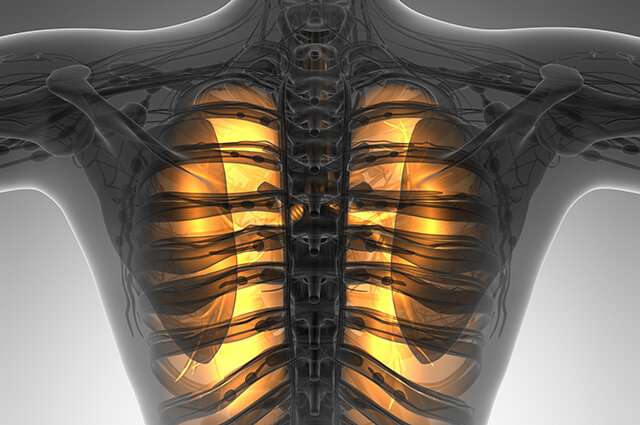
You’ve probably heard that your best defenses against the coronavirus are washing your hands, practicing social distancing, and having a healthy immune system. It’s that last part—the part you can’t really control for sure—that may have you crossing your fingers.
A dysfunctional immune system, experts say, is one reason that COVID-19 has proven more deadly in older adults and people with certain pre-existing conditions. But it is not always that the immune system is weak. Sometimes the body’s immune response is powerful but so out-of-control that it ends up killing COVID-19 patients. What exactly is going on?
Immunologist Pilar Alcaide, the Kenneth and JoAnn G. Wellner Professor at Tufts University School of Medicine, says that because the coronavirus is so new, we don’t fully understand how it works yet. But researchers can draw on what they already know about the body’s response to viral infections.
Here, she talks about aging and immunity, why obesity can make COVID-19 more lethal, and a dangerous immune reaction called a cytokine storm that is claiming the lives of some coronavirus patients.
Tufts Now: How does the immune system normally respond to a virus?
Pilar Alcaide: The first immune response is very rapid. You have immune cells that sense the virus as a strange agent, and they start making a lot of things called cytokines to stop the virus. Some of these cytokines kill cells in order to keep the virus from replicating. One cytokine is IL-1beta—which, by the way, was discovered at Tufts by Charles Dinarello—and that’s the cytokine that turns your temperature up. A lot of viruses die at high temperatures, so your body gives you a fever.
This first response is called innate immunity. If you think of it like an army, it is your first line of defense. If the virus passes that, that first line has previously coordinated with the second line of defense—the adaptive immunity.
The adaptive immunity is a more specific response to this particular invader to try to clear it. B cells generate antibodies, and T cells help B cells make antibodies and can kill viruses themselves. If everything goes well, you will kill the virus and you will develop some immunity to it.
We know that older adults are more likely to die from the coronavirus, in part because of their immune systems. What’s going on?
People who study aging know this phenomenon as immunosenescence. As you get older, both the innate and the adaptive immune cells are not as efficient at mounting a response to an infection.
In the innate immune cells, pathways that make cytokines don’t work properly. It takes them longer to make the cytokines and by that time the pathogen may have already invaded other cells. At the same time, the innate immune cells don’t communicate as well with the adaptive immune cells to mount that second line of defense.
Another important thing is that the immune cells are all derived from stem cells in the bone marrow. And as you age, your bone marrow has a smaller pool of those cells to draw on. That impacts how many immune cells you produce.
Some people with COVID-19 develop a dangerous immune response called a cytokine storm. What is that?
An effective immune system needs effector immune cells to fight the initial infection, but you also need suppressor immune cells to turn off those defenses. That’s what keeps people from having a constant fever of 105 degrees; your fever starts high and then goes down because your immune system is modulating, depending on how much of the virus you still have. You have to have a balance of those effector and suppressor cells, and older adults don’t always have that balance.
In a cytokine storm, your immune system thinks it needs to make more and more of those cytokines, even though they are not sufficient to stop the virus. It is a non-stop feedback loop. The virus is telling your immune system, “You can kill me. Activate more and more and more.”
Then, if the brakes stop working because the suppressor cells are not getting their message across, any vulnerable organ can be damaged. At that point, the virus may be not only in the upper respiratory tract but in the lungs or heart. So then you have a flood of immune cells going to those places.
Some of those immune cells are called cytotoxic T cells, because they release toxic compounds meant to kill a virus. But if they release them in a place where they shouldn’t be, then they damage the organs. And that’s what some people are dying from. If you cannot turn off your immune system, your own immune system can end up killing you.
The coronavirus appears to be more dangerous for people who have heart or lung disease, which makes sense, but also for people who are obese or have diabetes. How does having those conditions affect your immune response to a virus?
Obesity and diabetes are strongly associated with a dysfunctional immune system. If you look at the fat of a person with obesity or Type 2 diabetes, you will find a reservoir of T cells that make tons of these cytokines. So that’s why they are at increased risk—most have higher levels of proinflammatory cytokines.
The fact that they already have a high baseline means that they may not have the suppressive function to turn off that inflammation if they need to. So if they get an extra hit, it will be harder to stop. They are already one level closer to this cytokine storm.
Julie Flaherty, Tufts University


